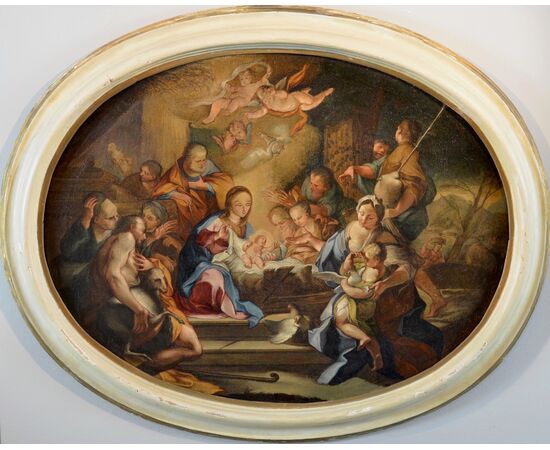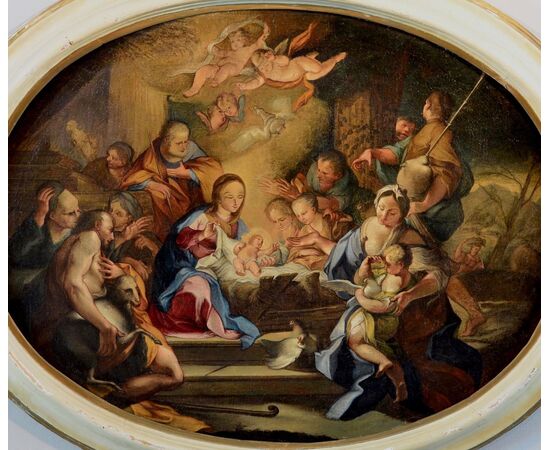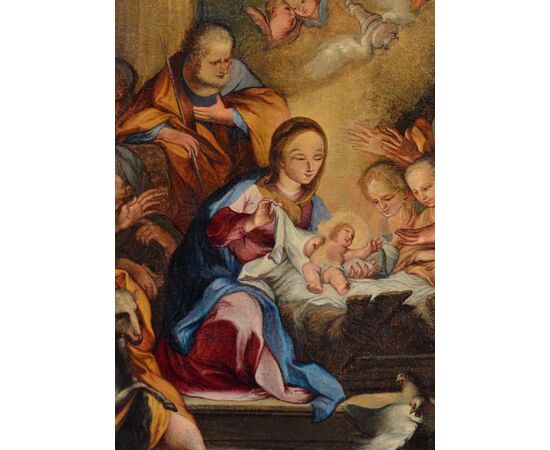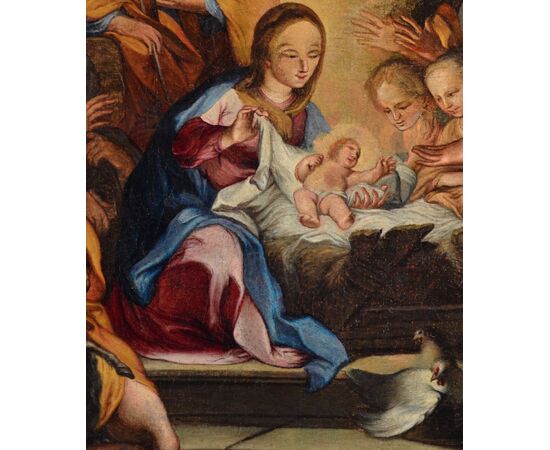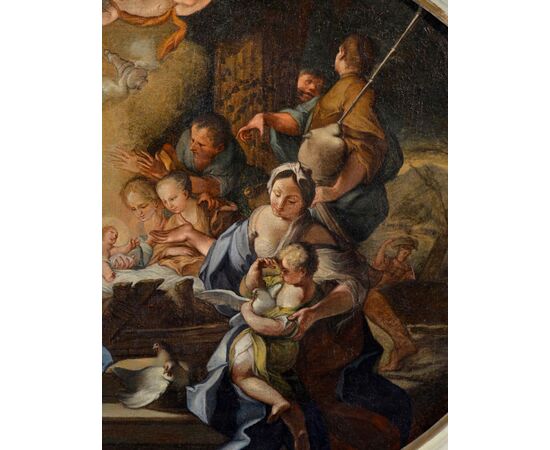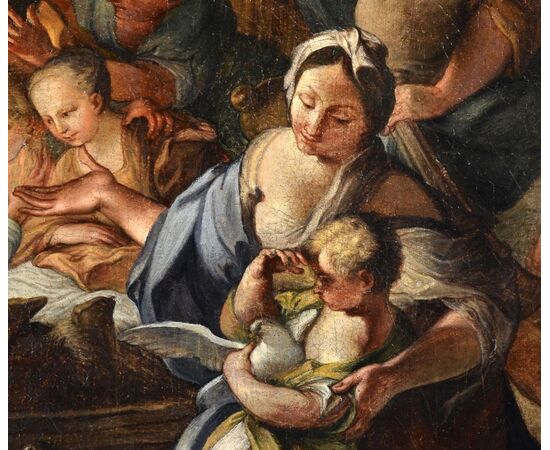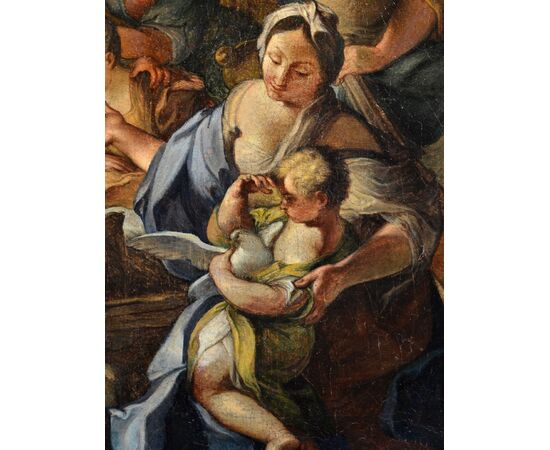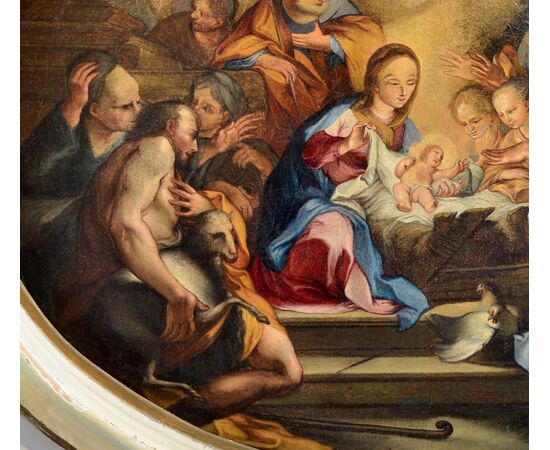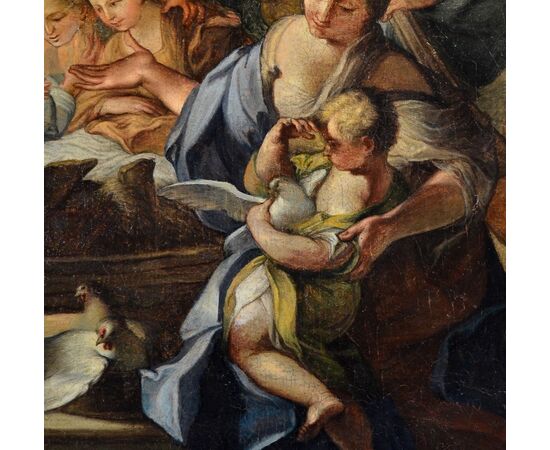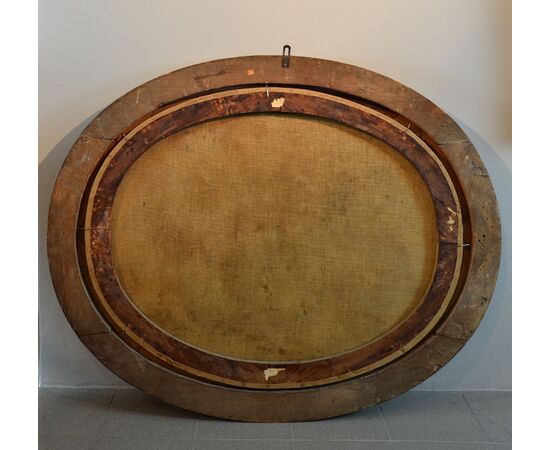The Adoration of the Shepherds, Sebastiano Conca (1680 - 1764) circle of
Sebastiano Conca (Gaeta, 1680 - Naples, 1764) circle of
The Adoration of the Shepherds
oil on oval canvas, (cm): 122 x 99, with frame
Full details: www.antichitacastelbarco.it
The pleasant painting proposed, executed in oil on oval canvas, is one of the re-editions of a painting by Sebastiano Conca executed around 1710 for Cardinal Pietro Ottoboni (now kept at the Paul Getty Museum in Los Angeles), which was so successful in the early years of the eighteenth century (see details).
Link to the museum work: http://www.getty.edu/art/collection/objects/671/sebastiano-conca-the-adoration-of-the-shepherds-ital...
The work, which depicts the Adoration of the Shepherds, impresses, in addition to its large size, for the strong scenographic sense of its evocative nocturnal setting. The whole is spectacular with a pleasant effect of lights that spring from the Child, compositional fulcrum, and gradually fade as they reach the most distant characters.
Some paintings with the same subject or with small variations have been presented in international auctions with considerable estimates.
For composition and construction it is inspired by a Neapolitan painting by Guido Reni (preserved at the Certosa di S. Martino) certainly studied by Conca during his early training in Naples in the workshop of Francesco Solimena.
Subsequently he founded a bottega in Rome, where his pictorial style developed in the direction of a neoclassical late Baroque.
Late Baroque characteristics of the painting are the illusionistic effect of perspective and especially the scenographic and theatrical representation of the theme. However, the masterful use of chiaroscuro with the high expressiveness of the subjects are elements of Neoclassicism.
The reasons for his resounding success can be recognized in the painter's great ability to produce himself as an eclectic mediator of the different components matured during the 17th century: that scenography, magniloquent and grandiose, of Giordanesque inheritance, learned in the years of alunnato and collaboration with Solimena, and that more measuredly composed of the reforming classicism of Maratta, which could be accessed more directly when he moved to Rome.
Conca's ability was therefore to know how to measure himself both with tradition and with the cautious novelties of the moment, dosing and enhancing from time to time the different and multiple components of the late Baroque language.
CONDITION:
The canvas, in good condition, is accompanied by an ivory lacquered frame.
The work is sold with a photographic certificate of authenticity according to law.

